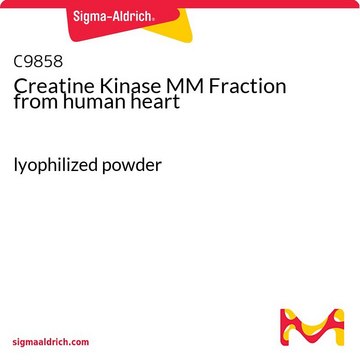D5891
1,1-Dimethyl-4-phenylpiperazinium iodide
≥98% (TLC or titration)
Sinonimo/i:
DMPP
About This Item
Prodotti consigliati
Saggio
≥98% (TLC or titration)
Forma fisica
powder
Punto di fusione
234-238 °C (lit.)
Solubilità
H2O: 21 mg/mL
Temperatura di conservazione
−20°C
Stringa SMILE
[I-].C[N+]1(C)CCN(CC1)c2ccccc2
InChI
1S/C12H19N2.HI/c1-14(2)10-8-13(9-11-14)12-6-4-3-5-7-12;/h3-7H,8-11H2,1-2H3;1H/q+1;/p-1
XFZJGFIKQCCLGK-UHFFFAOYSA-M
Informazioni sul gene
human ... CHRNA1(1134) , CHRNA10(57053) , CHRNA2(1135) , CHRNA3(1136) , CHRNA4(1137) , CHRNA5(1138) , CHRNA6(8973) , CHRNA7(1139) , CHRNA9(55584) , CHRNB1(1140) , CHRNB2(1141) , CHRNB3(1142) , CHRNB4(1143)
rat ... Chrna2(170945) , Chrna3(25101) , Chrna4(25590) , Chrnb2(54239) , Chrnb4(25103)
Cerchi prodotti simili? Visita Guida al confronto tra prodotti
Applicazioni
- to study the roles of α7 and α4β2 nAchRs in autonomic regulation of cardiovascular responses in urethane-anesthetized mice
- to study the mechanism involved in improving glucose tolerance in diet-induced obese (DIO) mice treated with DMPP
- to study its pharmacological effect on enteric viscerofugal neurons in the myenteric plexus of guinea-pig colon
Azioni biochim/fisiol
Caratteristiche e vantaggi
Codice della classe di stoccaggio
11 - Combustible Solids
Classe di pericolosità dell'acqua (WGK)
WGK 3
Punto d’infiammabilità (°F)
Not applicable
Punto d’infiammabilità (°C)
Not applicable
Dispositivi di protezione individuale
dust mask type N95 (US), Eyeshields, Gloves
Certificati d'analisi (COA)
Cerca il Certificati d'analisi (COA) digitando il numero di lotto/batch corrispondente. I numeri di lotto o di batch sono stampati sull'etichetta dei prodotti dopo la parola ‘Lotto’ o ‘Batch’.
Possiedi già questo prodotto?
I documenti relativi ai prodotti acquistati recentemente sono disponibili nell’Archivio dei documenti.
Il team dei nostri ricercatori vanta grande esperienza in tutte le aree della ricerca quali Life Science, scienza dei materiali, sintesi chimica, cromatografia, discipline analitiche, ecc..
Contatta l'Assistenza Tecnica.








